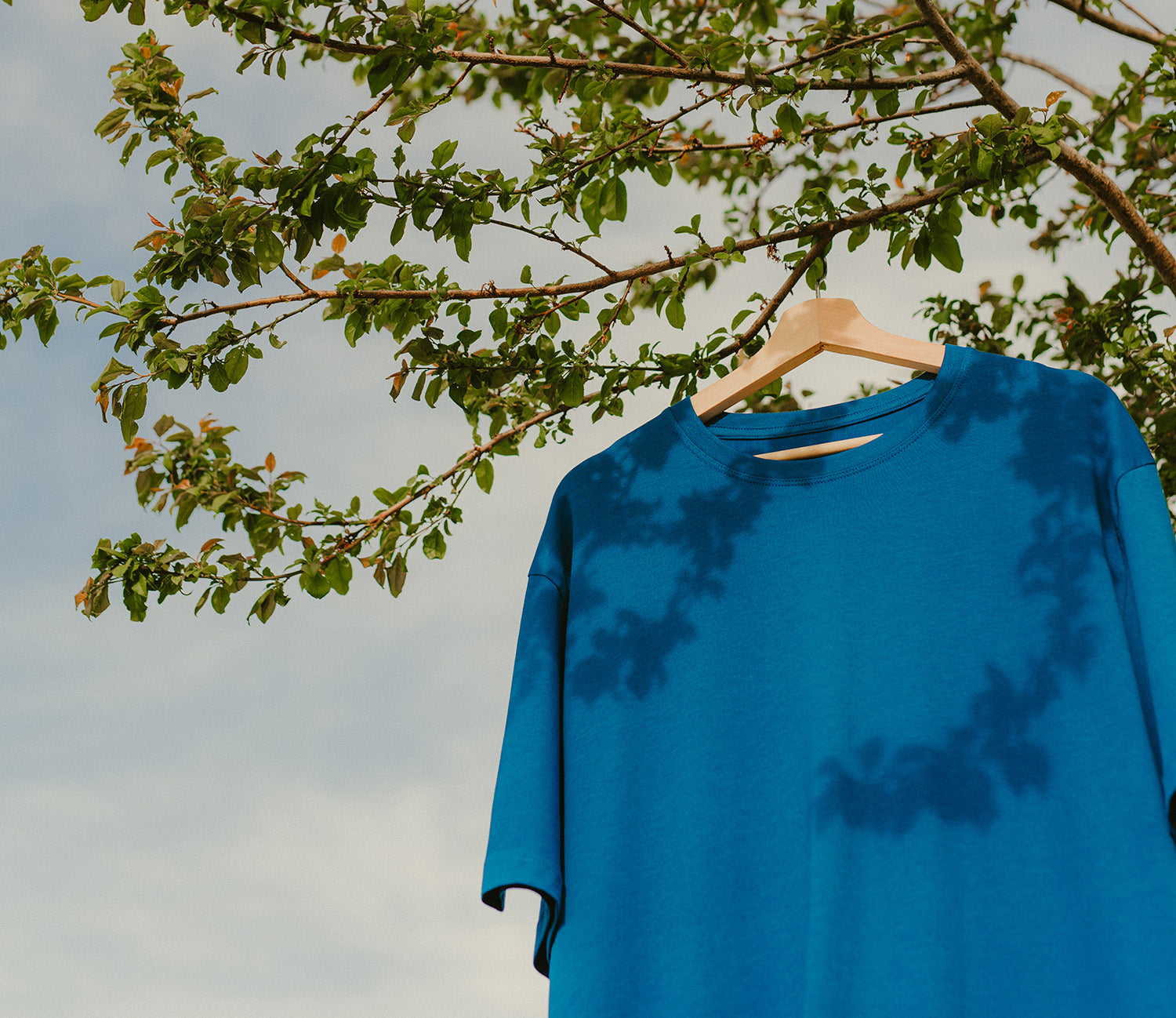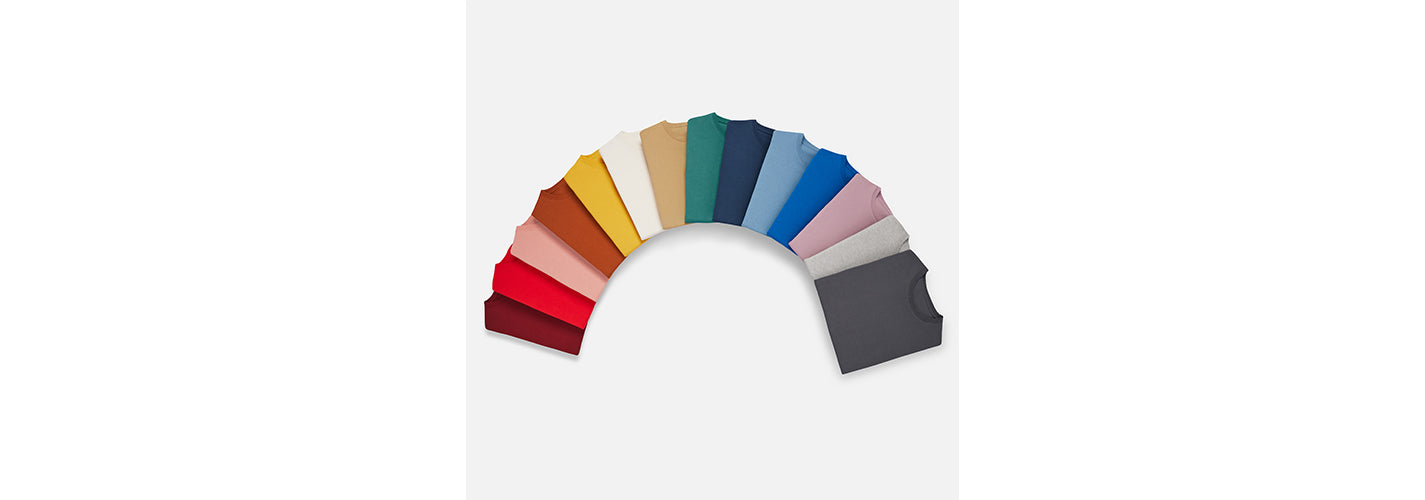The Silk Screening Process
Design is Created
The silkscreen printing process starts with a design of one's choosing. To begin, the screen printing artwork needs to be separated digitally by color; the variety of colors used will matter when it comes to cost and efficiency.
Screen is Prepared
Once the art is made correctly for the screen printing process, the actual screens can now be prepared. The screens themselves are made up of a porous fabric mesh with a frame to support it. Then to prepare one screen, a specific part of the design is printed onto transparent acetate film. In today's technology we have printers that will from this point, pick the mesh screen best suited for the design used and the texture of the fabric wanted.
Emulsion is Prepared
Before going further, an important step is the coating of a mesh screen with a light-reactive layer of emulsion. With that layer of emulsion, the acetate film is laid on top of the sheet and is now exposed to highly bright light. This step is there to harden the emulsion and therefore leave the parts of the screen covered by design in liquid form, washing away the unhardened emulsion parts. All of these steps leave a clear screen with the design shape clearly outlined for the ink to pass through. The process thus far must be repeated as many different color layers are needed to create the final design.
Item is Prepared for Print
To start preparing the actual printing process, you load all the screens into the printing press and then lay the garment as flat as possible underneath the first or only screen. Even though there are many different types of machines for this technique, the most common is an automatic rotary carousel printer. This is a popular machine to use as it can work through multiple prints at once and can speed up the transition of layering multiple colors on one print.
Ink is Pressed Through Screen Onto Item
From here, the screen is pressed down against the garment while the ink is added to the top of the screen and using a squeegee, the ink is pulled down the length of the screen. This allows for only the shape of the design to allow ink through and transfer onto the garment. When multiple colors are used, the machine moves the garment around in a rotary fashion and repeats this step with different screen designs and ink colors.
Ink is Cured and Dried
After passing through all the ink presses, the garment is ready to be put through a dryer in order to cure the final product. Further checking and washing of the garment ensures the washing away of any residue and pushes the final product to be finished and ready to be worn. Repeating this process for the number of garments desired will produce you the final quantity of products desired.

The Inks
Plastisol Inks
Plastisol ink is durable, thick, versatile, and easy to mix. This makes for very precise and clear designs. Due to its wide use, it is readily available and comes in a large variety of colors. It is a long-lasting ink and does not dry out fast, making it an attractive option for a screen printer to use. The various ink qualities can be customized for a soft print with a lower gloss, creating a more flat finish. In order for the ink to dry in an appealing way, it needs to have heat applied to it.
Water-Based Inks
Water-based ink is the right option when a client would rather the ink soak into the actual fibers of the fabric - unlike plastisol where the ink sits on top of the garment. It can produce a softer and more solid feel. The downfall of this ink is it might need heat to dry depending on the humidity of the environment. Additionally, this ink may require more color matching, as well as a higher count mesh screen and a retarder to prevent flooding. Water-based inks are the most eco-friendly option, even though there are actions happening to try to make plastisol inks more sustainable.
Discharge Inks
Discharge inks can be found in both plastisol and water-based inks. It works by removing the color of the fabric where the discharge ink is applied and then applying a different color in its place. When working with garments that are 100% cotton, this option can be extremely successful. The discharge technique requires heat to dry as well, but is a more technical ink and should be implemented by experienced screen printers.

What is the Difference Between Silkscreen Printing and Other Printing Methods
Silkscreen printing is one of the oldest techniques, tracing back to 9,000 BC. However since silkscreen printing was first used, many other techniques have arisen as options for garment printing. A popular comparison nowadays is screen printing vs. digital printing and which option best suits one’s needs. Digital printing is exactly what one would think, using digital technology to print the ink on the garment, similar to the office printing technology we are used to. While screen printing is a more hands-on method where ink is transferred through a screen onto a garment. Both methods work for garment printing, but it just comes down to the priorities of the print and what method works best for one's desired end product.
Ensuring Quality Silkscreen Printing
Choosing Quality Apparel
Anytime one is looking at different screen printing options, the strengths and/or weaknesses of one will be exaggerated depending on the quality of garment chosen to print on. One can optimize a screen printing process for quality, but if not combined with high-quality fabric, the printing process can only do so much. This is why when looking at cotton t-shirts or cotton apparel in general, to maximize printing results one should look for 100% cotton. Providing luxury apparel options for businesses can lead to the security of knowing their garment will be the best available and therefore yield the best final product. When choosing a printing business, having one also know the value in quality methods and luxury blanks would help ensure your business' success even more. An example of quality silkscreen printing methods can be found here.





Leave a comment
This site is protected by hCaptcha and the hCaptcha Privacy Policy and Terms of Service apply.